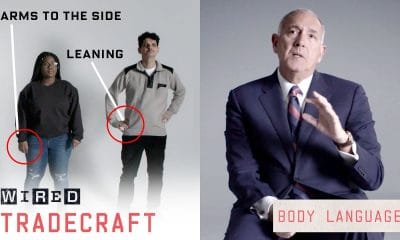Popular Science
Apollo 11’s Legacy in Pop Culture | The Moon Landing in TV and Movies
When President Kennedy challenged NASA to put a man on the moon before 1970, it took some of the world’s brightest engineers, mathematicians, and human computers to meet the deadline. The challenge sparked not only their imaginations, but so many around the world, and its legacy has continued to do so for five decades. Happy…
Popular Science
Popular Science Predicted The Year 2000 (it went badly)
What happens when scientists and futurists predict the year 2000… in the 1960s? In Popular Science, Walter Cronkite chronicled the state of science and technology in 1967 to project what life might be like in the 21st century. Cronkite and the prognosticators actually got a lot of it right… and some of it they got…
Popular Science
The $2,000 FaceTime Box From 1987 (VisiTel Video Phone)
Do you know about VisiTel? Video calling technology is such a mundane feature of smartphones now that it would be weird if a device *didn’t* have it. But the idea for the first FaceTime is buried deep in vintage tech history, all the way back in the 70’s… the 1870’s. And most people hated the…
Popular Science
The Day We Made Frankenstein’s Monster
When Everett Knowles hitched a ride on a Boston train, he expected to make it home in a few minutes. But the result was the final leg of a medical history journey more than 30,000 years in the making when Eddy Knowles’ doctors turned tragedy into a medical miracle. The path from accident to surgery…
-

 Science & Technology4 years ago
Science & Technology4 years agoNitya Subramanian: Products and Protocol
-

 Wired5 years ago
Wired5 years agoHow This Guy Became a World Champion Boomerang Thrower | WIRED
-

 CNET4 years ago
CNET4 years agoWays you can help Black Lives Matter movement (links, orgs, and more) 👈🏽
-

 Wired5 years ago
Wired5 years agoNeuroscientist Explains ASMR’s Effects on the Brain & The Body | WIRED
-

 Wired5 years ago
Wired5 years agoWhy It’s Almost Impossible to Solve a Rubik’s Cube in Under 3 Seconds | WIRED
-

 Wired5 years ago
Wired5 years agoFormer FBI Agent Explains How to Read Body Language | Tradecraft | WIRED
-

 People & Blogs2 years ago
People & Blogs2 years agoSleep Expert Answers Questions From Twitter 💤 | Tech Support | WIRED
-

 Wired5 years ago
Wired5 years agoJessica Alba & Gabrielle Union Answer the Web’s Most Searched Questions | WIRED

















Jessica Boddy
July 18, 2019 at 8:12 pm
Wow what a cool and fun video! I sure do love PopSci!!!
DarkSpectriality
July 18, 2019 at 8:25 pm
Jessica Boddy you had one job but you are literally the same person in the video
Jason Lederman
July 18, 2019 at 8:15 pm
This is so fun!! What a great way to look at history—through the people an event inspired.
DarkSpectriality
July 18, 2019 at 8:25 pm
Jason Lederman are you paid to comment this? xD
Popular Science
July 18, 2019 at 10:52 pm
The Simpsons, Mad Men, 30 Rock… did we miss any references in the video? Sound off with your favorite!
Keallei
July 20, 2019 at 12:03 am
Moon landing audio visuals never get old. Always welcome is Neil’s famous line “One small step for man, one giant leap for mankind”
Jeremy Benson
July 26, 2019 at 8:02 pm
Yeah, I don’t know. Could just as easily be photographs of the desert than the moon. For all the satellites they got up there you would think we would have a dozen streaming HD space channels. Why not give is 1000s of photos and videos of space, instead CG images of satellites?